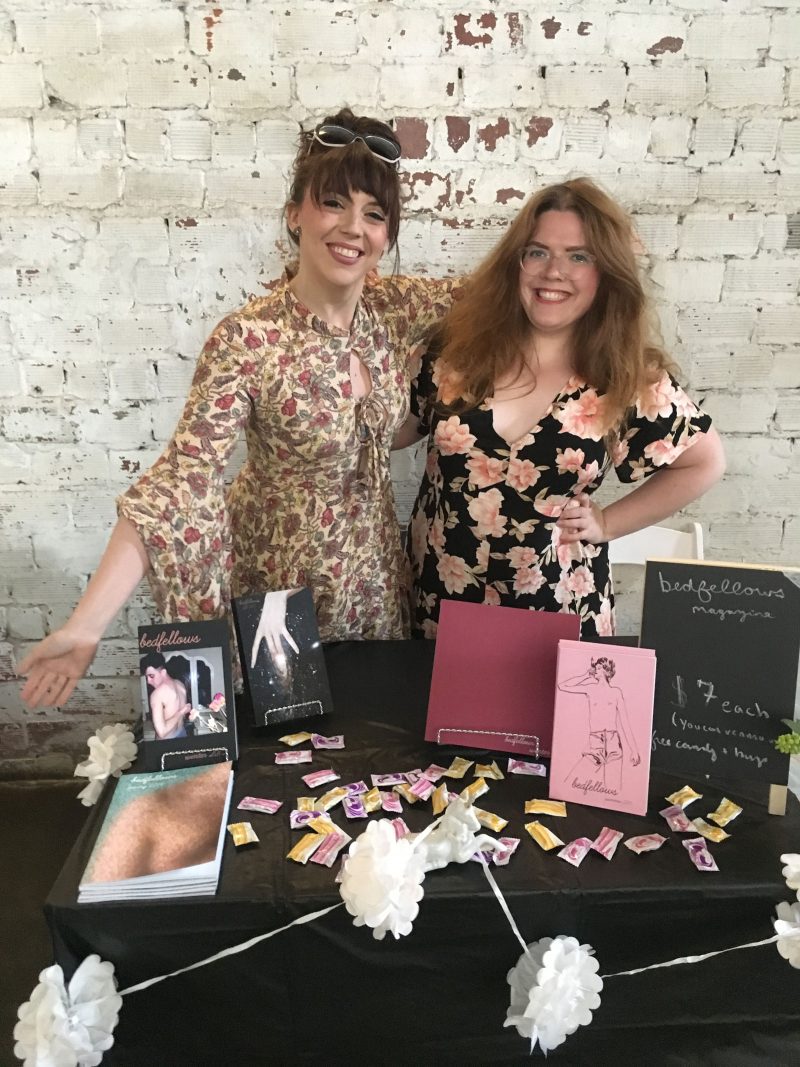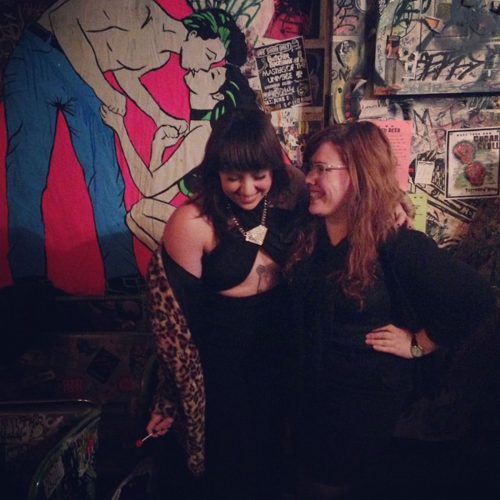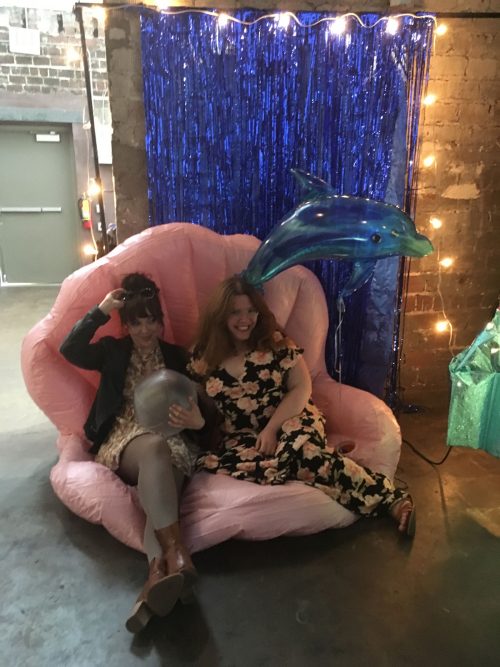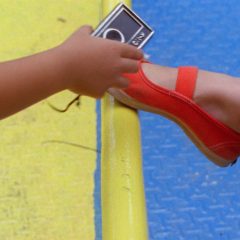
Jackee Sadicario and Alina Pleskova are cofounders of bedfellows, a print and online literary journal about intimacy and sex that centers the voices of queers, femmes, and people of color. They have been executive editors together for five years now, soliciting work of a wide and varied crew of Philadelphia poets that always culminates in a striking compilation of developing and established voices trying out material and styles they may not have already explored.
Levi Bentley: Where did the idea for bedfellows come from?
Alina Pleskova: bedfellows started after a panel on sex writing in year. The homogeneity of speakers and content of the panel bummed me out. Someone asked how to write a non-cringey sex scene and the panelist said, “Well, you don’t want to write smut.” What’s wrong with smut, and why is that antithetical to having literary merit? Sometimes sex is cringey. Why not write that? And why not ask legit anyone besides straight, white, predominantly male writers? The second-wave slogan cites itself here, but seriously–the personal is the political, jackass. I called Jackee from the hallway and said “We need to do that thing we’ve been talking about.”
Jackee Sadicario: I had edited Hyphen, the undergraduate literary and art magazine at Temple, for three years with an amazing staff. Alina and I had already been a part of the poetry community in Philadelphia where we identified writing about intimacy honestly as a need and a challenge. We solicited friends who had not approached the a topic before and were so impressed with how our prompt was received.
LB: What went into forming the identity of the website and publication?
JS: Alina and I rifled through literary magazines and chapbooks. We had a mutual desire for a perfect-bound publication; we were hoping to elevate a denigrated writing form to “the literary.” This contrasts with our playful, suggestive covers. Layout and trimsize are largely determined by submissions. Laura Blagrave, our managing editor, is absolutely everything on this front. The website design began as a joke I made. “What if contributors give us a picture of their bed as the link to their work?” My friend Sean Ahern helped me flesh out how it could work. I’m a poet-scientist and am privileged to know how to research things and who to ask for help and also trust myself to be inventive, trust the creative process.
LB: How do you pay the costs associated with publication?
JS: Oh boy, finances–that was a huge barrier. Printing for free in various places sure helped. We continue to make just enough $$ to cover printing, website, and about 3 vodka sodas. If we didn’t have the support of people purchasing the magazine, we would not have one. It’s the same money forever recycled.
AP: We don’t come from familial or partner wealth. Pretty much everything we’ve done has been a result of generosity of community. Our friend Michael Messina donated toward our first print run (and never asked for his money back, bless you Mike), Patrick Blagrave has copyedited for free since issue 1, our interns are unpaid and get college credit, venues let us use their spaces for free, sex shops let us raffle away their products, writers are given contributor copies, cover artists donate their work. At the last launch party we ran our own bar for the first time, and past and present contributors helped us bartend (thank you, Rachel Milligan and Amanda Miska)! Really, we’ve got a village.
LB: How do you see the publication changing and growing?
AP: We’re not waving the precarity banner proudly forever. Our queer and DIY communities pride themselves on being self-sustaining and doing more with less, but it would be amazing to do more with… more. We’d love to pay contributors. We haven’t been able to apply for outside funding yet. It’s already a part-time job that we don’t get paid for, and we find time when we can.
LB: How are the events related to the publication for you?
AP: Events are integral to bedfellows’ vibe. Our audience is like us, people who have waded through largely uniform work about the body and didn’t see themselves represented. As our queen Alice Notley wrote, “This is a sorry culture, babe. You’ve got to make your own.” Plus it’s fun to throw a party.
JS: It adds another layer to the text to see this work read in person.
AP: Most work we publish is solicited because we prefer to find contributors in a community-oriented way (readings, other lit mags, word of mouth) as much as possible and build a supportive, interconnected, inclusive network. It’s also a way of getting more established/well-known writers into a room with talented folks who are maybe being published for the first time and watching them discover each other. Often, the latter category includes those who don’t have access to formal systems of literary mentorship or community–like an MFA program, for example. Jack and I found such a welcoming literary home here in Philly outside of institutional affiliations, and we wanted to expand that circle.
LB: What are your goals for the publication?
AP: Our stated goal is to subvert what’s typically thought of as sex writing, but it’s more than that. A literary magazine run by queer women that focuses on the messy, joyful, scary, confusing reality of human intimacy–where marginalized writers are amplified and centered–is a small force for good in our fucked up culture.
JS: We have also included work about the absence of intimacy, loneliness is also telling.
LB: What are some of the more memorable pieces and connections bedfellows has brought to you?
AP: I remember seeing Elias Rodriques read “Names” and it floored me. I had to stop crying before I approached him to ask if we could publish it. We didn’t know each other at all. Folks have written about everything from aging to fertility to transitioning to survivorship to asexuality, and so much more– the whole gamut of human experience in relation to sex/desire/intimacy. I’ve felt nearly every emotion on the human scale in response. Ras Mashramani’s “JonBenet Ramsey” cleaved my heart in half. Kevin Varrone’s love poems made it fuller. Maged Zaher’s poem in the winter 2015 issue ends: “Where you arch your back / And we die connected.” I can’t handle it! I was just thinking about Christy Davids’ terrific “[Species / Specious]” the other day and went looking for it online and realized, “Oh wait, I know exactly where that is– in the magazine we publish, on my bookshelf.”
JS: The bedfellows work becomes like a song stuck in the head. Currently: “The Confabulation” by Jacob Bennett in winter 2015 (#3) and Lauren Yates contributions in the fall 2016 issue (#6). The work can also make you fall in love again with your friends, like Rachel Milligan’s poem “Take Me Out Behind the Shed.” The last two lines gut me, “I too wretch, am wretched.”
bedfellows is currently soliciting / reading submissions for issue 9, summer 2019. For more about submissions, see their website Check out past issues on the site, and follow bedfellows on Twitter, Instagram, Or Facebook
More Photos









